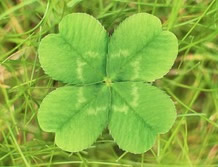2 Fold, 3 Fold and 4 Fold Functional Osteopathic Medicine
The way to practice Functional Osteopathic Medicine in a 3 fold and 4 fold functional model.

2 Fold
Above the diaphragm – Upper body (Spiritual body)
Below the diaphragm – Lower body (Earthly body)

3 Fold
Head & neck – Nerve Sense pole = Thinking life
Chest & rib cage – Rhythmic system = Feeling life Abdomen & limbs
Metabolic pole = Willing life

4 Fold
Fire or Warmth / ‘I’ body (conscious)
Air / Astral body
Water / Etheric body – Life Energy or Prana
Earth / Physical body
Osteopaths those are using a lot of functional (subtle) techniques in treating the somatic dysfunction and improving the structure – functional relationship in the body.
With integrating knowledge and concepts of Ayurvedic medicine and Anthroposophic Medicine, Dr Joshi has taken the Functional Osteopathic Medicine practice to another level.
Bones in our head are round, bones in our limbs are long, and bones in our chest / rib cage are in between; long and curved / bent. This is a three fold representation in our body.
Head / Cranium is like a bucket with water and carrying a watermelon in it that is floating. Bucket is stiff, however Cranium is like a soccer ball with all those patches coming together with stitches, same way the Cranial bones come together and have sutures in between forming a bowl. Bowl is like a container that holds a water body / CSF – Cerebrospinal fluid. Sutures let the cranial bones move in order to keep the fluid moving, it is the mechanical movement of cranial bones that keeps the fluid body to stay in a dynamic state. This movement of CSF is important to nourish our brain and spinal cord, also it helps in removing the toxins or by product of nervous system metabolism. There is a neural tube full of this life body / water body that moves continuously from head / cranium all the way down to the pelvis/ Sacrum, that is why the Cranio-Sacral connection has been emphasized by Osteopath. When Cranium squeezes the cerebrospinal fluid (CSF) it is received by the pelvis, when the pelvis squeezes the cerebrospinal fluid (CSF) it is received by Cranium. The dura (a sheath over the brain and spinal cord) connects the Cranial bones, C2 – second cervical vertebra. If there is abnormal movement of Cranial bones then it will cause sinus fluid congestion, just like a traffic congestion if the traffic light is not working normally. Key to remove the traffic congestion is to keep moving, to help with sinus headaches or pressure, the sinus fluid has to keep moving, as movement is the key. This fluid body or etheric body heals the physical body, most healthcare practitioners work with the physical body, as a Functional Osteopath, I work with this fluid body / etheric body and the results are phenomenal. Once the Cranium (Federal Govt) is in perfect alignment or connection with the rest of the body (State) it will never go bankrupt and will thrive.
We have a small plane in our head, the wing of the plane is Sphenoid bone, Occiput is the body of this plane, and Temporal bones are the wheels of this plane. As long as there is normal alignment, the plane goes in a straight line, if there is any abnormal alignment or Cranial dysfunction, then it will create an unhappy relationship with the rest of the body, leading to an illness.
Five diaphragms in human body
Most people know only a single thoraco-abdominal diaphragm, there are 2 above (Cranium, Thoracic inlet) and 2 below (Pelvis and Plantar fascia); so in total there are five diaphragms. Diaphragm helps in moving the fluid / etheric body. Diaphragm is like an umbrella, the cloth is the diaphragm muscle, and lower ribs are like the spokes of an umbrella. When the umbrella is open the ribs are in an inhaled position and when the umbrella is closed, the ribs are in an exhaled position. This helps in sucking or moving the fluid from the lower half of the body to be moved into the upper half of the body above the diaphragm. This keeps the connection between the lower body / Earthly body and upper body / Spiritual body. Diaphragm is the biggest respiratory muscle, if we perform diaphragmatic breathing then we move the fluid body, we stay grounded, calm and alkaline, rather than acidic.
Gait mechanics
Heel to toe gait walk with stabilization of weight on the mid foot with a drop of the same hip, swinging the opposite arm and bending the head to the same foot to keep the eyes at same level, then finally toe push off on the opposite side. It’s the eyes that need to be on the same plane, so we walk straight. Propulsion If we are properly aligned, then the mechanical movement in the lower back and hip makes us propel forward smoothly. There are two independent suspensions in the lower back, with turning of the sacrum in both directions making a movement like butter is made by churning the buttermilk/ cream. Then we don’t spend energy walking and don’t feel tired from our daily routine or being fatigued easily
Foot architecture
There are 2 arches in our feet that give us the ability to bear the whole body weight on them and not be in pain. One arch is longitudinal from heel to toes, and the other is a mid foot transverse arch, these two arches meet, like two rods of a tent so it achieves the shape. If these arches are falling then the foot loses its architecture and cannot hold the body weight, that could cause foot pain. Middle transverse arch is formed by two bones – Navicular and Cuboid bones pushing against each other, so when a direct pressure is applied from top, then it comes down a little and pushes back up. This constantly stretches our plantar fascia in a rhythmic pattern, to keep moving the fluid up against the gravity. Foot acts like a hanging bridge due to its architecture, it stretches a little in length with weight bearing and when the weight is taken off it shortens (thickens) and curves back up.
Ankle joint
Four major bones coming together to form the ankle joint – Tibia (shin bone), Fibula (side bone), Talus (pedestal bone) and Calcaneus (Heel bone). In order for normal gait mechanics, the Calcaneus (heel bone) has to rock in a “Yes” or nodding motion. Fibula (side bone) moves forward and backward like a gear in order for us to walk upstairs or downstairs, push down on the gas pedal or brake pedal, and make us able to sit in a chair or get up from sitting position. The fibular head moves forward then the distal lateral malleolus moves backward. There is an interosseous membrane in between the tibia and fibula that takes all the shocks from ground reactive forces, so we don’t feel pain when we are walking or running.
Forearm and elbow
Just like the leg, there are two bones (Radius and Ulna) in the forearm with an interosseous membrane in between them. This membrane absorbs all the shocks when we are riding a bicycle or running. The membrane works like a “Ninja” with a stick in his hand deflecting all the knives thrown at him / her in all different directions. The radius and ulna are like two chopsticks, just like the chopsticks roll over sometimes when trying to grab the food, the radius bone rolls / glides over ulna in pronation and roll / glides back in supination. The radial head moves forward like grooving out in the tunnel during pronation (palms down) and the radial head moves backward like grooving in the tunnel during supination (palms up). Most injuries either from fall or trying to break the fall will cause the restriction of the radial head. Freeing up the radial head to move freely in the tunnel forward and backward to keep the normal function. Somatic dysfunction An abnormal function of a certain part of the body due to a structural misalignment. When a functional osteopath puts their hands on the dysfunctional part of the body, then they can feel that there is a lack of movement of the fluid / etheric body or prana through that part. By performing a physical or structural change in the dysfunctional part of the body, the function of that part of the body is regained. The change could be subtle to make sure that the etheric body / fluid body / prana is freely moving through that part and heals the physical body.
